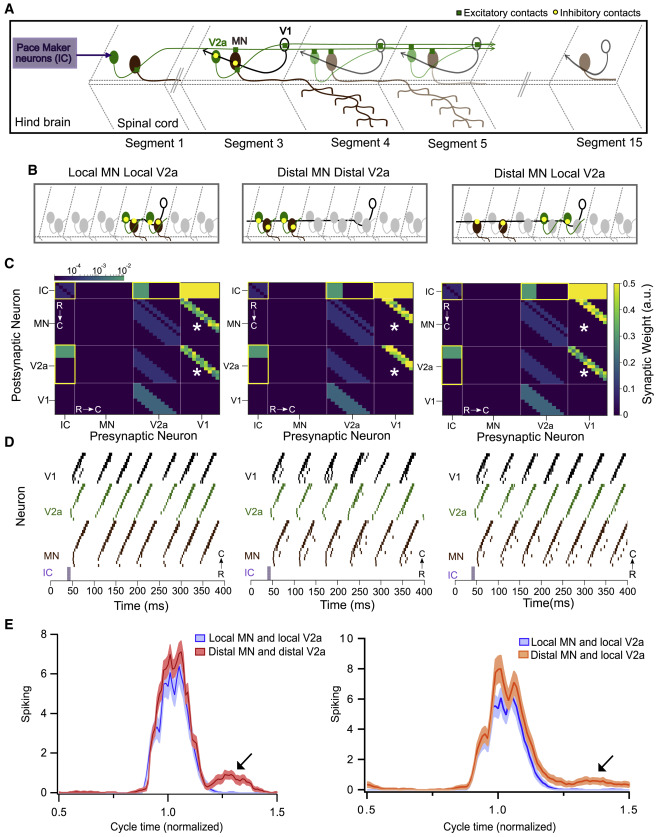Fig. 7
Figure 7. Modeling spinal circuitry with local and distal V1 inhibition (A) Schematic of the computational model showing a reduced V1 (black), V2a (green), and motor neuron (MN) (brown) network driven by rostrally located pacemaker neurons (purple box). (B) Schematic of 3 different network structures simulated with the network model. Left: local connectivity from V1 neurons onto MNs and V2as. V1s synapse onto V2as and MNs located within 1–3 segments. Middle: distal connectivity from V1s onto MNs and V2as. V1s synapse onto V2as and MNs located 4–6 segments away. Right: mixed local-distal connectivity from V1s. V1s synapse onto MNs located 4–6 segments away and V2as located within 1–3 segments. (C) Heatmap showing connectivity weights for neurons across 3 different network models. Connections outlined in yellow are gap junctional and follow a logarithmic scale. Asterisks indicate connection weights that are altered across models. (D) Raster plots of spike times from 1 representative simulation of each network. (E) Spiking of MNs with respect to a normalized swim cycle. Black arrow points to the extraneous spiking observed for both distal MN/distal V2a connectivity (left) and more weakly in distal MNs/local V2a connectivity (right). See also Figure S7 and Tables S1 and S2.
Image
Figure Caption
Acknowledgments
This image is the copyrighted work of the attributed author or publisher, and
ZFIN has permission only to display this image to its users.
Additional permissions should be obtained from the applicable author or publisher of the image.
Full text @ Curr. Biol.

